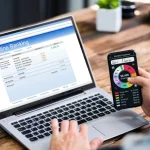
A Guide to Retail Accounting is a great resource for those looking to learn the fundamentals of retail accounting. This industry is highly competitive and surprisingly complex, with numerous software vendors competing for your business. The complexity of the industry is largely due to the fact that retail accounting is divided into two categories: vertically oriented vendors and horizontally oriented vendors. These vendors, in turn, have created a large number of programs that are difficult to sort through and select from. The guide will help you navigate through the vast selection of programs and find the ones that are right for your needs.
A Guide to Retail Accounting can help you understand how to calculate your profit margins, as well as determine how much inventory to purchase. Performing a cost-based analysis of inventory costs is a common strategy for retail accounting, but it requires more sophisticated calculations. The benefits of retail accounting are that it allows you to know the retail price of your inventory, the price that customers pay for it. Cost accounting, on the other hand, involves a wide range of costs, and many of these factors are outside the control of the store owner.
Inventory valuation is one of the most important accounting policies in the retail industry. The average cost method and the first-in-first-out (FIFO) method are both valid methods for valuing stock. Whichever method you use, choosing the one that best represents your business is crucial. For retail accounting, you can either use retail accounting software or manually keep records. Keeping accurate records is essential for making sound decisions about your business.
The process of retail accounting is not unique to any industry, and is really just an inventory valuation technique. In other words, it is the process of converting current inventory to an estimated retail price, and subtracting the sales figures from this estimate. Then, it determines the cost-to-retail ratio, which represents the difference between the purchase price and the sale price. While the accounting method relies on the ability to assign a fixed price to every item, retailers may encounter problems when selling items of different prices.
When performing the accounting process, keep in mind that most retail business owners are not accountants. Using reliable retail accounting software can automate the process and save you a lot of time. The software allows you to make accurate P&Ls, financial statements, and other routine tasks. The software can also help you reconcile accounts, make accurate reports, and stay current with your books. The income statement, balance sheet, and cash flow statement are important pieces of information that will help you make good decisions about your business.
A Guide to Retail Accounting is a must-have resource for any retail business owner. It covers every aspect of running a retail business. This resource is full of tips and advice that will help you achieve success in your retail business. Once you have mastered the basics of retail accounting, you’ll be able to apply it to all of your business ventures. And when you get stuck, you’ll never look back! You’ll be able to fix whatever problems you might encounter as you continue to grow your business.








